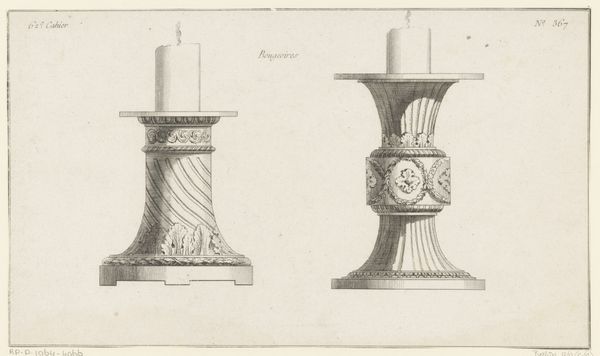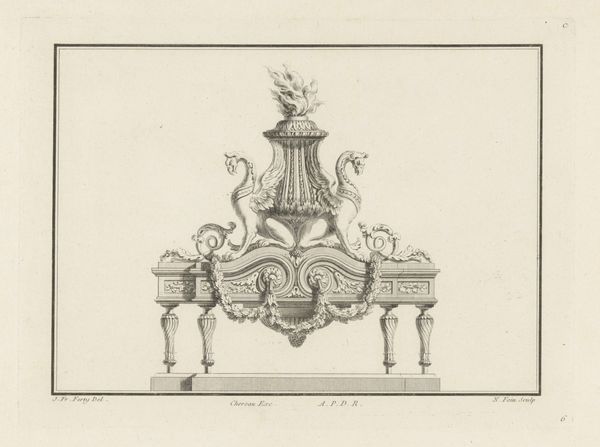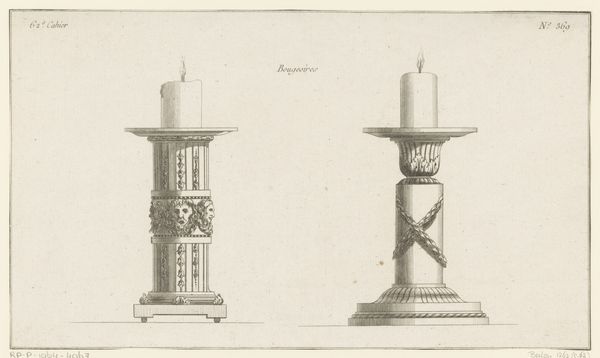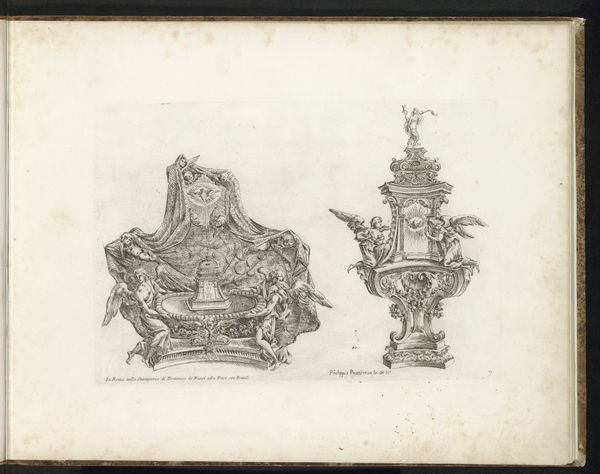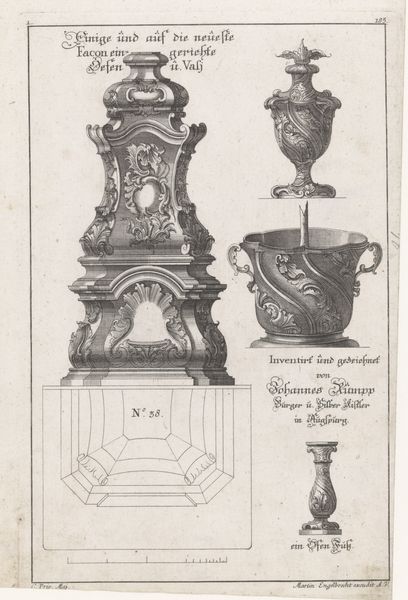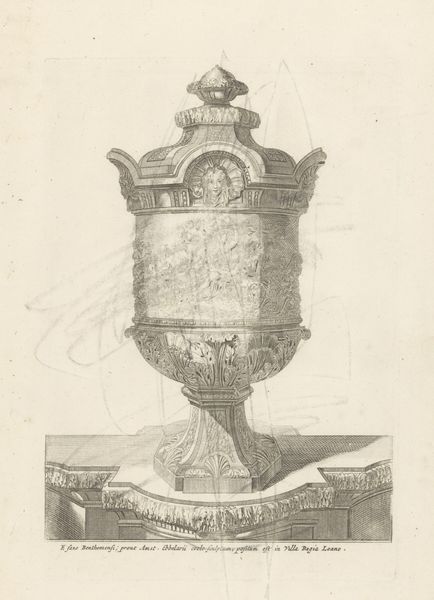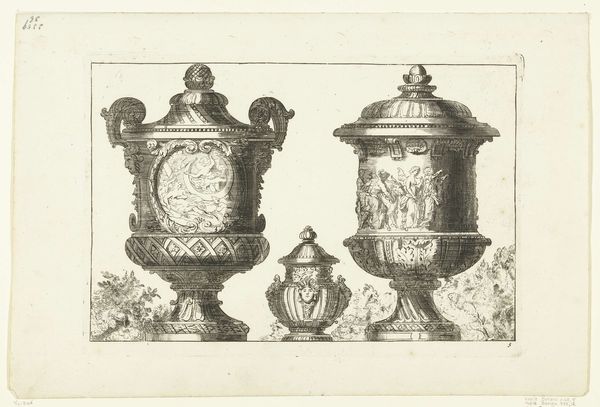
drawing, print, engraving
#
drawing
#
table
#
baroque
# print
#
pencil sketch
#
old engraving style
#
personal sketchbook
#
decorative-art
#
engraving
Dimensions: height 198 mm, width 301 mm
Copyright: Rijks Museum: Open Domain
Editor: Welcome. We’re looking at “Kast en twee tafels,” or “Cabinet and two tables,” an engraving created anonymously between 1705 and 1775, and held at the Rijksmuseum. What strikes me first is the intricate detail rendered simply with lines. The ornate style feels very grand, yet the monochrome palette keeps it from feeling overwhelming. What do you make of its formal qualities? Curator: The beauty here truly lies in the relationships of form. Observe how the artist repeats the curving lines throughout each object, creating a cohesive visual language. The negative space around the objects is as important as the objects themselves, emphasizing their distinct silhouettes and preventing visual clutter. Editor: So, it’s not necessarily about what the objects *are*, but how they *look* together? Curator: Precisely. Notice how the varying heights of the furniture create a visual rhythm, leading the eye across the composition. And the balance – how is it achieved? Not through exact symmetry, but through a careful distribution of detail and mass. Editor: The cabinet in the middle does feel like the anchor of the composition. It’s the largest, most detailed object. Does that dominance suggest a hierarchy? Curator: Perhaps not a hierarchy, but a focal point. However, note that the two clocks provide a sense of formal mirroring, which creates a dialogue. Now, consider the surfaces... Editor: They all have these slightly raised edges. Are these different planes? Curator: Precisely. They direct the eye. Without it, you don't see where the edge is and the space disappears. Consider that, and how the whole presentation works, even to the point that this looks almost mechanically designed, yet the forms are all florid and 'natural.' What effect does it produce, putting artifice into supposed natural objects? Editor: That’s fascinating – I hadn’t noticed the tension between the mechanical feel and the organic flourishes. I see how understanding the structure helps unlock new layers of interpretation. Curator: Indeed. By carefully considering line, form, and space, we move beyond simple recognition and truly *see* the art. Editor: I will look at furniture much more closely in future. Thanks!
Comments
No comments
Be the first to comment and join the conversation on the ultimate creative platform.


